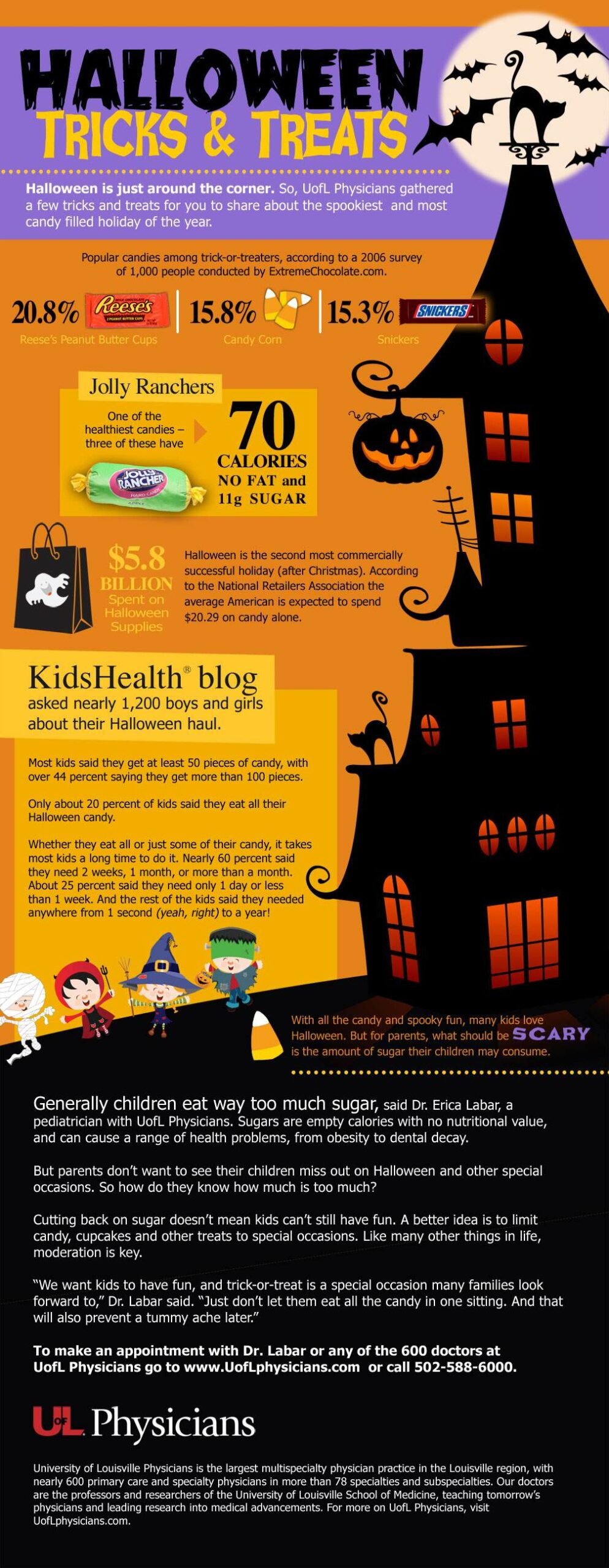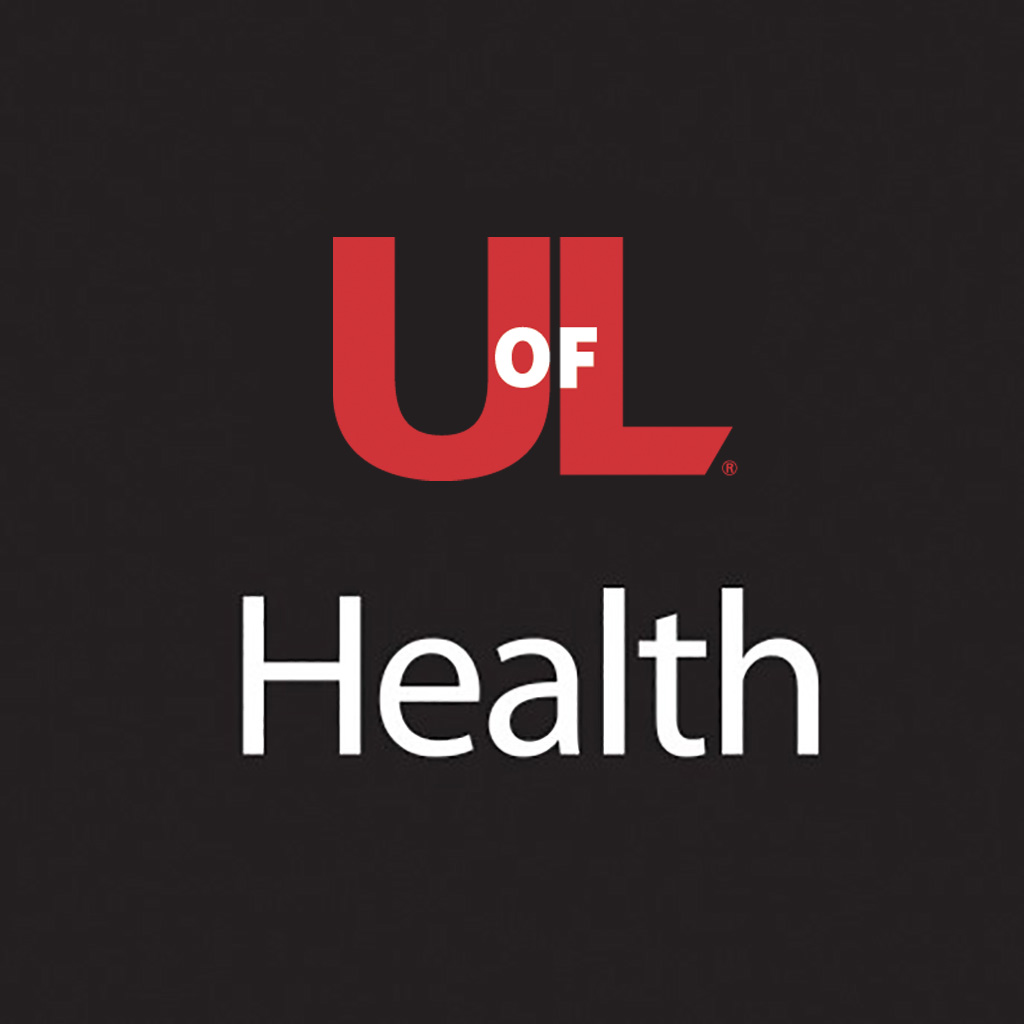
With all the candy and spooky fun, many kids love Halloween. But for parents, what should be scary is the amount of sugar their children may consume.
Generally children eat way too much sugar, said Dr. Erica Labar, a pediatrician with UofL Physicians. Sugars are empty calories with no nutritional value, and can cause a range of health problems, from obesity to dental decay.
But parents don’t want to see their children miss out on Halloween and other special occasions. So how do they know how much is too much?
Dr. Labar points to guidelines from the American Heart Association on calorie intake.
“As a rule of thumb, sugars are meant to be used sparingly,” Dr. Labar said. “Added sugar means added calories. The amount of sugar you can have is based on the number of added calories you should consume.”
She notes that preschoolers need about 1,200 to 1,400 calories a day, with added sugar limited to 16 grams a day – or no more than 4 teaspoons.
Kids age 4-8 need 1,600 calories a day, of which only 12 grams should be added sugar, or no more than 3 teaspoons. That’s a bit less than preschoolers because of this age group’s nutritional needs. Because these children have so many nutritional requirements for growth, high-quality foods are particularly important.
For pre-teens and teens, the guideline is 1,800-2,000 calories, and no more than 20-32 grams, or 5-8 teaspoons, of added sugar.
Cutting back on sugar doesn’t mean kids can’t still have fun. A better idea is to limit candy, cupcakes and other treats to special occasions.
“We want kids to have fun, and trick-or-treat is a special occasion many families look forward to,” Dr. Labar said. “Just don’t let them eat all the candy in one sitting. And that will also prevent a tummy ache later.”
Other rules she recommends for Halloween are to only accept candy that is fully packaged and not homemade, and to go through all candy before giving it to children to ensure no packages are open and nothing has been tampered with.
A big way to cut down sugar in a child’s diet is to watch what they drink. Dr. Labar said many people just don’t realize how many calories and how much sugar drinks contain. For example, one 12-ounce Coca-Cola has 39 grams of sugar alone. And if a child drank just one serving of a sugary drink, like soda or Kool-Aid, every day for a year, that would be 50,000 calories, she said.
And it’s not just sports drinks and sodas that are loaded with sugar – fruit juices are just as bad. Even 100 percent, no-added-sugar juices still have lots of the sweet stuff.
“We recommend zero sugary drinks for kids,” Dr. Labar said. Instead, she recommends water or low-fat milk, or whole milk for kids under age 2.
If parents want their kids to get the benefit of fruit, she recommends the real thing. Because fruits are less processed than juices, there are many more nutritional benefits, including more fiber.
The best thing parents can do, Dr. Labar said, is to “become label readers. Flip it over and see how much sugar is in that particular item. It is surprising and can definitely be scary.”










